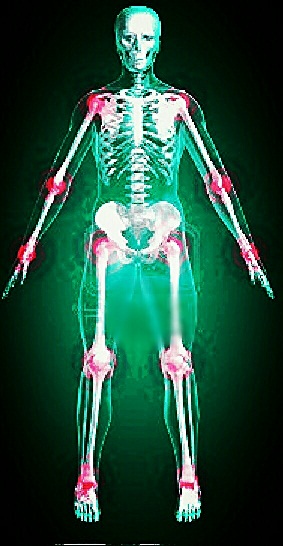Strength training and inflammatory cytokines (IC's)

What are inflammatory cytokines and what do they have to do with strength training? IC's are substances that effect the inflammation degree of immune responses; and are association with various chronic diseases. What IC's have to do with strength training involve how their levels might respond unfavorably to exercise. The potentially negative IC response exercise might provoke is likely manageable with appropriate training.
IC's are activated resultant of anything that elicits an immune response like illness, allergies, and injuries. As stated above, IC's help regulate inflammation and include both pro and anti inflammatory types. Chronic illness/injury results in dominance of the pro-inflammatory IC's; which are those associated with ailments like cardiovascular disease and arthritis. Furthermore, inflammatory IC's, in excess, thwart strength gains!
So, what does weight training have to do with inflammatory cytokines ? ... Believe it or not, exercise induces an immune response that, if excessive and chronic, can effect IC's as negatively as certain illnesses!
Exercise induces immune reactions for a number of reasons; but those most relevant to strength training are tissue damage. Tissue damage stimulates necessary inflammation to increase blood flow to the injured area for healing. Additionally, immune cells that "eat" damaged tissue debris also congregate around the injury.
The aforementioned response is beneficial and necessary, but when it's unrelenting, however, chronic inflammation and tissue degeneration ensue! The unrelenting immune response clogs the injured area and the inflammatory cytokines and "hungry" debris-eating cells are "stuck" in the area.
Imagine cats locked in produce store to eat mice long after eating all the mice.....they would start to eat the very produce you locked them in to protect! What happens when there are more hungry-cells than debris to "eat"?...healthy tissue might be at risk!
Be alarmed, but don't stop exercising. Just institute practices that help prevent overwhelming immune response. Such practices include tolerable progression, knowing when to "lay-off", and implementing restorative practices.
Tolerable progression means increasing exercise demands on the body at an adaptable rate; which entails adding work only when performance surplus. If training weight is moving slower despite pulling/pushing as hard as possible, you're likely less capable of tolerating more weight/reps/sets. If reps are skyrocketing, however, there's likely a sufficient force surplus for added work!
Knowing when to lay-off is as simple as having a sensible criterion for determining when to rest and/or reduce training demands. If you experience more than 2 successive stagnant/regressed workouts, reduce frequency/demands. When training sessions are continually progressive, retain current frequency/demands; if it ain't broke don't fix it!
Restoration measures entail everything from stretch and massage to cryotherapy, nutrition, and supplements. Stretch and massage loosen tension before it becomes inflammatory and helps eliminate metabolic waist. Ice, diet and supplements can reduce inflammation via acid/base-balance and free-radical reduction.
To conclude, inflammatory cytokines warrant concern even for strength enthusiasts. Intense training can exacerbate the negative effects of inflammatory cytokines. Sensible training and restoration, however, can allow for fierce training with minimal IC risk.
References
1. Centers for Disease Control and Prevention. Physical Activity and Health: A Report of the Surgeon General Executive Summary http://www.cdc/gov/nccdph/sgr/sgr/htm.
2. Nieman, D.C. et al. (1990) Int. J. Sports Med. 11:467.
3. Mackinnon, L.T. (2000) Med. Sci. Sports Exerc. 32:S369.
4. Smith, L. (2000) Med. Sci. Sports Exerc. 32:317.
5. Biffl, W. et al. (1996) Ann. Surg. 224:647.
6. Faist, E. et al. (1991) Am. J. Surg. 161:266.
7. Ostapiuk-Karolczuk J, Zembron-Lacny A, Naczk M, Gajewski M, Kasperska A, Dziewiecka H, Szyszka K.J Sports Med Phys Fitness. 2012 Oct;52(5):563-8.